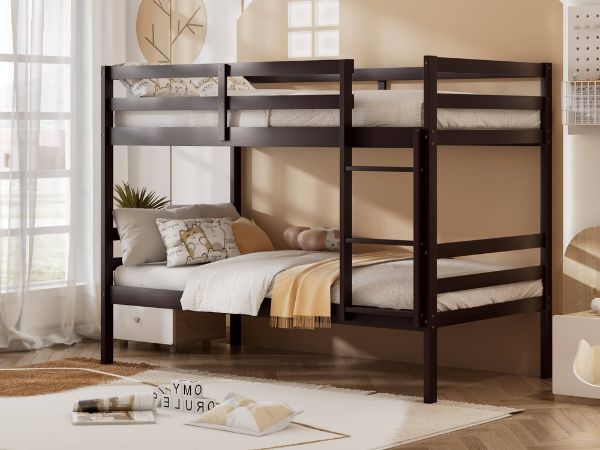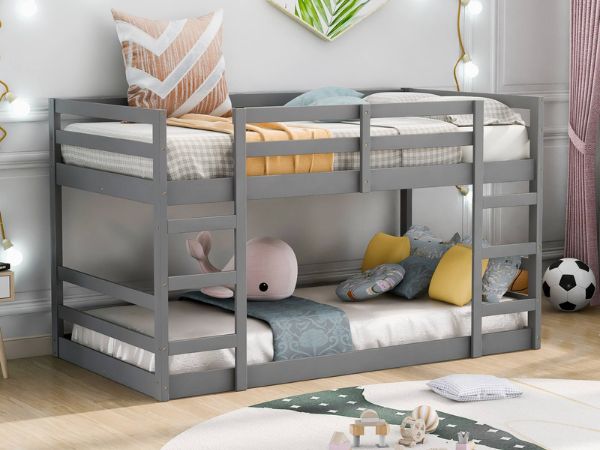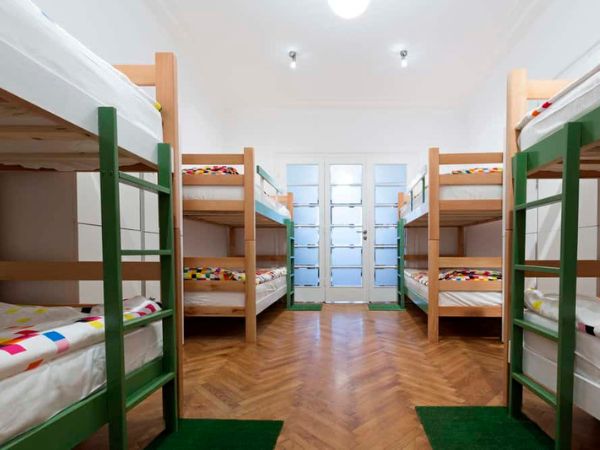Bunk beds have long been a staple of shared bedrooms and sleepover parties. They offer a practical solution for maximizing space in smaller rooms, but when it comes to setting up these stacked sleeping arrangements, questions often arise about whether or not bunk beds require the use of box springs. In this article, we’ll delve into the world of bunk beds and explore Do Bunk Beds Need Box Springs?
Contents
- 1 What Are Box Springs?
- 2 The Purpose of Box Springs
- 3 Types of Bunk Beds
- 4 The Role of Mattresses in Bunk Beds
- 5 Common Bunk Bed Mattress Types
- 6 Why Some People Use Box Springs with Bunk Beds
- 7 Factors to Consider When Using Box Springs with Bunk Beds
- 8 Bunk Bed Safety Concerns
- 9 Weight Limits and Box Springs
- 10 Alternatives to Box Springs for Bunk Beds
- 11 Benefits of Not Using Box Springs with Bunk Beds
- 12 Choosing the Right Mattress for Bunk Beds
- 13 Supportive Bedding Accessories
- 14 Bunk Bed Assembly and Box Springs
- 15 Ensuring Proper Ventilation for Bunk Beds
- 16 Maintenance and Cleaning Tips
- 17 Customizing Bunk Bed Support
- 18 Conclusion: Box Springs and Bunk Beds – A Final Verdict
- 19 FAQs (Do Bunk Beds Need Box Springs):
What Are Box Springs?
Before we can discuss whether bunk beds need box springs, it’s essential to understand what box springs are. Box springs, also known as foundation beds, are supportive platforms typically made of a wooden frame and springs or a rigid metal grid. They are designed to provide a stable base for mattresses and help distribute weight evenly.
The Purpose of Box Springs
Box springs serve several purposes in a traditional bed setup. They help absorb shock and reduce wear on mattresses, enhance mattress support, and elevate the bed’s height for easier entry and exit. They also assist with mattress breathability, ensuring adequate airflow to prevent mold and mildew growth.
Types of Bunk Beds
Bunk beds come in various styles, with the two primary categories being traditional bunk beds and loft bunk beds. Traditional bunk beds consist of two stacked beds, while loft bunk beds have an elevated top bunk, leaving space beneath for other purposes, such as a desk or play area.

The Role of Mattresses in Bunk Beds
The type of mattress used in a bunk bed is a critical factor in determining whether box springs are necessary. Bunk beds generally accommodate twin or full-sized mattresses, and the choice of mattress can significantly impact comfort and support.
Common Bunk Bed Mattress Types
Bunk bed mattresses are available in various materials, including innerspring, memory foam, latex, and hybrid options. The choice depends on individual preferences for comfort and support.
Why Some People Use Box Springs with Bunk Beds
While box springs are not typically required for bunk beds, some individuals still choose to use them for various reasons. These reasons include added height, improved mattress support, and extending the life of the mattress.
Factors to Consider When Using Box Springs with Bunk Beds
For those considering using box springs with bunk beds, it’s essential to take specific factors into account, such as ceiling height, safety concerns, and the bed’s overall stability.

Bunk Bed Safety Concerns
Safety should always be a top priority when setting up bunk beds. Proper assembly, guardrails, and weight limits must be adhered to, whether or not box springs are used.
Weight Limits and Box Springs
Understanding weight limits is crucial, as box springs can add extra weight to the bunk bed structure. Manufacturers provide weight guidelines that should be followed diligently.
Alternatives to Box Springs for Bunk Beds
There are alternative support systems available for bunk beds, including bunkie boards, platform beds, and slats. These options can offer support without the added height of box springs.
Benefits of Not Using Box Springs with Bunk Beds
Opting not to use box springs can have its advantages, such as a lower profile for the bunk bed, potentially saving space and making it safer for children.
Choosing the Right Mattress for Bunk Beds
Selecting the right mattress is paramount. Consider factors like mattress thickness, material, and firmness to ensure a comfortable night’s sleep.

Supportive Bedding Accessories
In addition to the mattress choice, supportive bedding accessories like mattress toppers and mattress pads can enhance comfort and support.
Bunk Bed Assembly and Box Springs
When assembling a bunk bed, it’s essential to follow the manufacturer’s instructions carefully, whether you choose to include box springs or not. Proper assembly ensures the bed’s stability and safety.
Ensuring Proper Ventilation for Bunk Beds
Good ventilation beneath the top bunk is vital for preventing mold and mildew growth. This consideration is especially important when using box springs or alternative support systems.
Maintenance and Cleaning Tips
Keeping bunk beds and mattresses clean is crucial for hygiene and longevity. Regular maintenance practices can extend the life of your bedding.
Customizing Bunk Bed Support
Customization options for bunk bed support are available, allowing you to tailor the bed to your specific needs and preferences.
Conclusion: Box Springs and Bunk Beds – A Final Verdict
In conclusion, whether or not bunk beds need box springs depends on various factors, including mattress type, personal preference, and safety considerations. While box springs can provide added support and height, they are not strictly necessary. The key is to make an informed decision based on your specific requirements and the type of bunk bed you have.
FAQs (Do Bunk Beds Need Box Springs):
1. Can I use a memory foam mattress on a bunk bed without box springs?
Yes, you can use a memory foam mattress on a bunk bed without box springs. Memory foam mattresses are known for their ability to conform to the body, making them compatible with various support systems, including bunkie boards or slats.
2. Are there weight limits for bunk beds with box springs?
Yes, bunk beds, whether with or without box springs, have weight limits specified by the manufacturer. These limits are crucial for safety and structural integrity, and they should always be followed to prevent accidents or damage to the bunk bed.
3. Do loft bunk beds require box springs?
Loft bunk beds don’t necessarily require box springs. You can use alternative support systems like bunkie boards, slats, or platform beds depending on your comfort preferences and the loft bed’s design.
4. Are there alternatives to box springs for bunk beds?
Yes, there are several alternatives to box springs for bunk beds, including bunkie boards, slats, platform beds, and even adjustable bed bases. These options provide support and stability while accommodating different mattress types.

